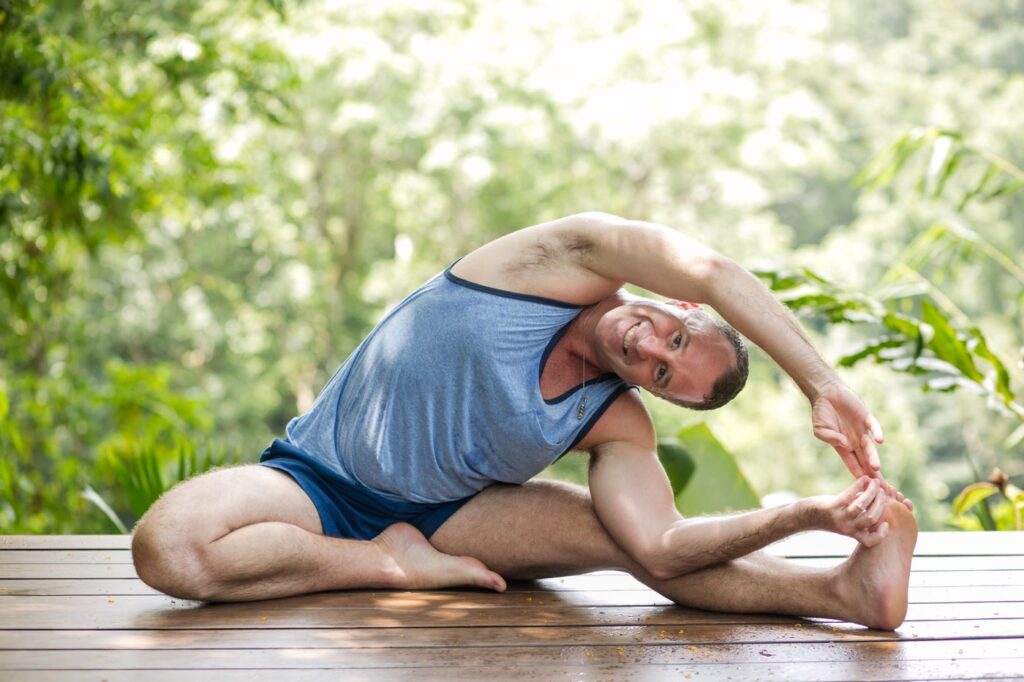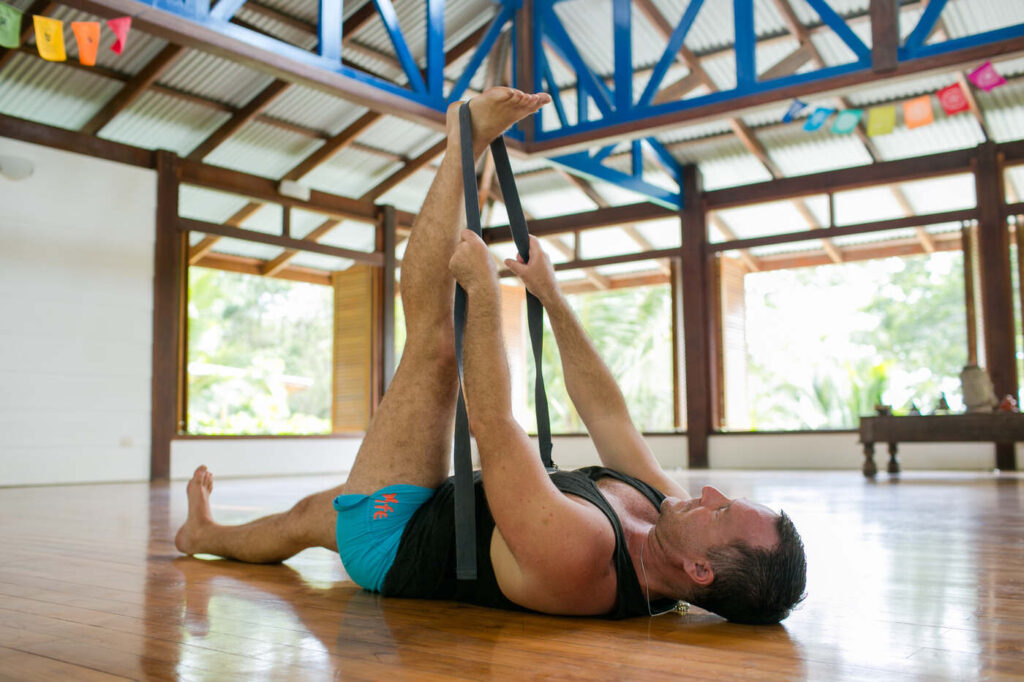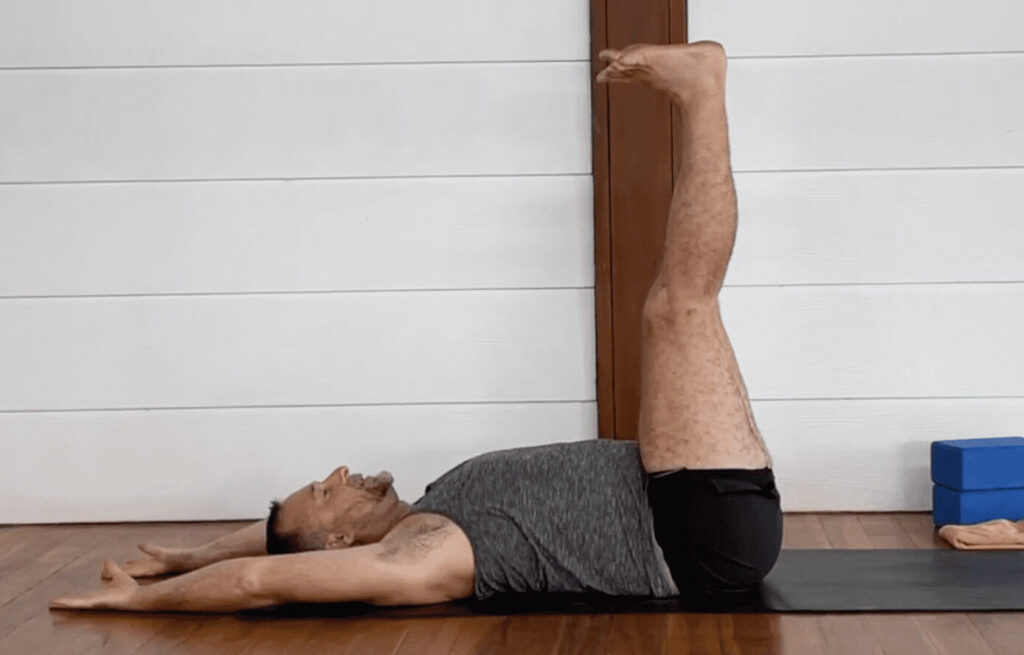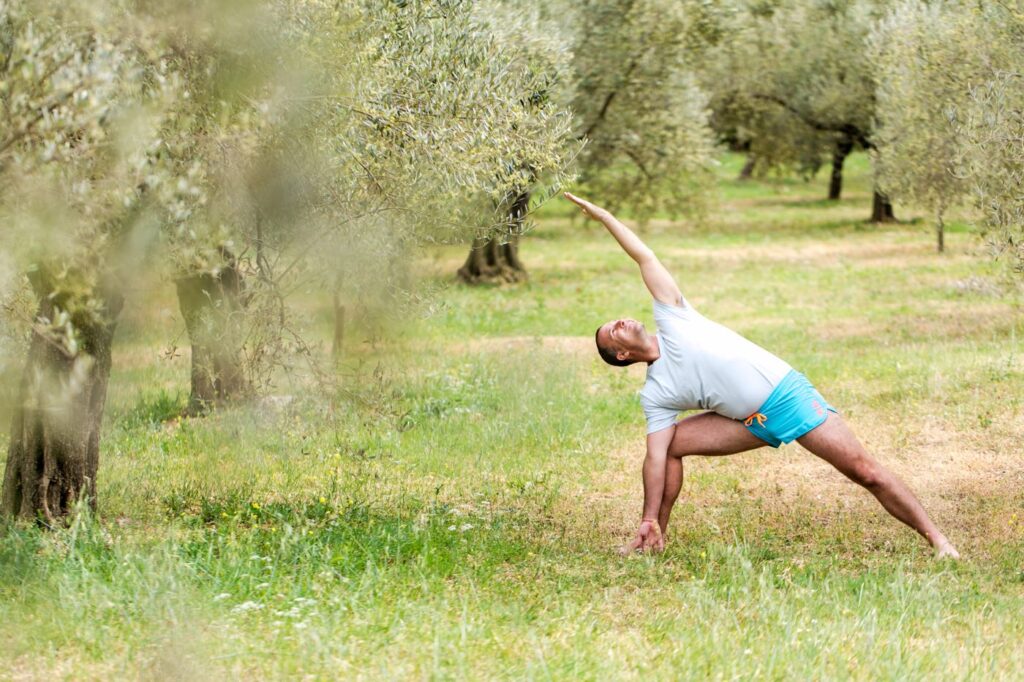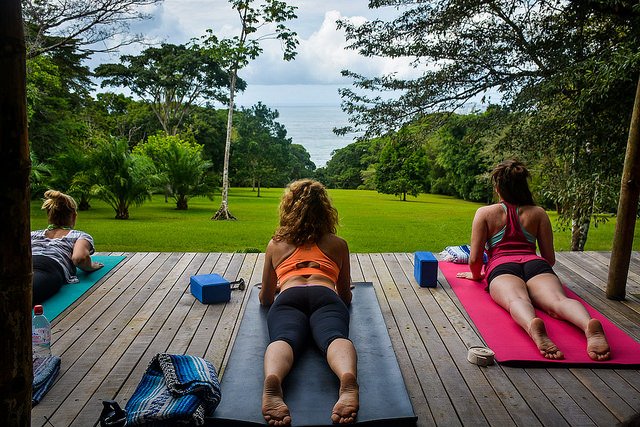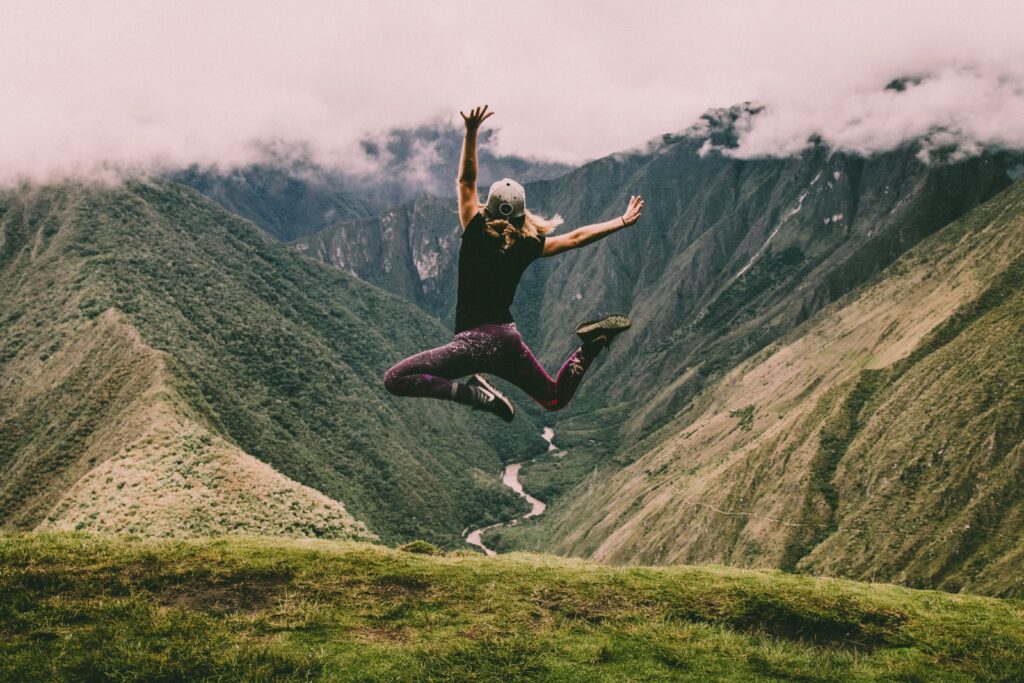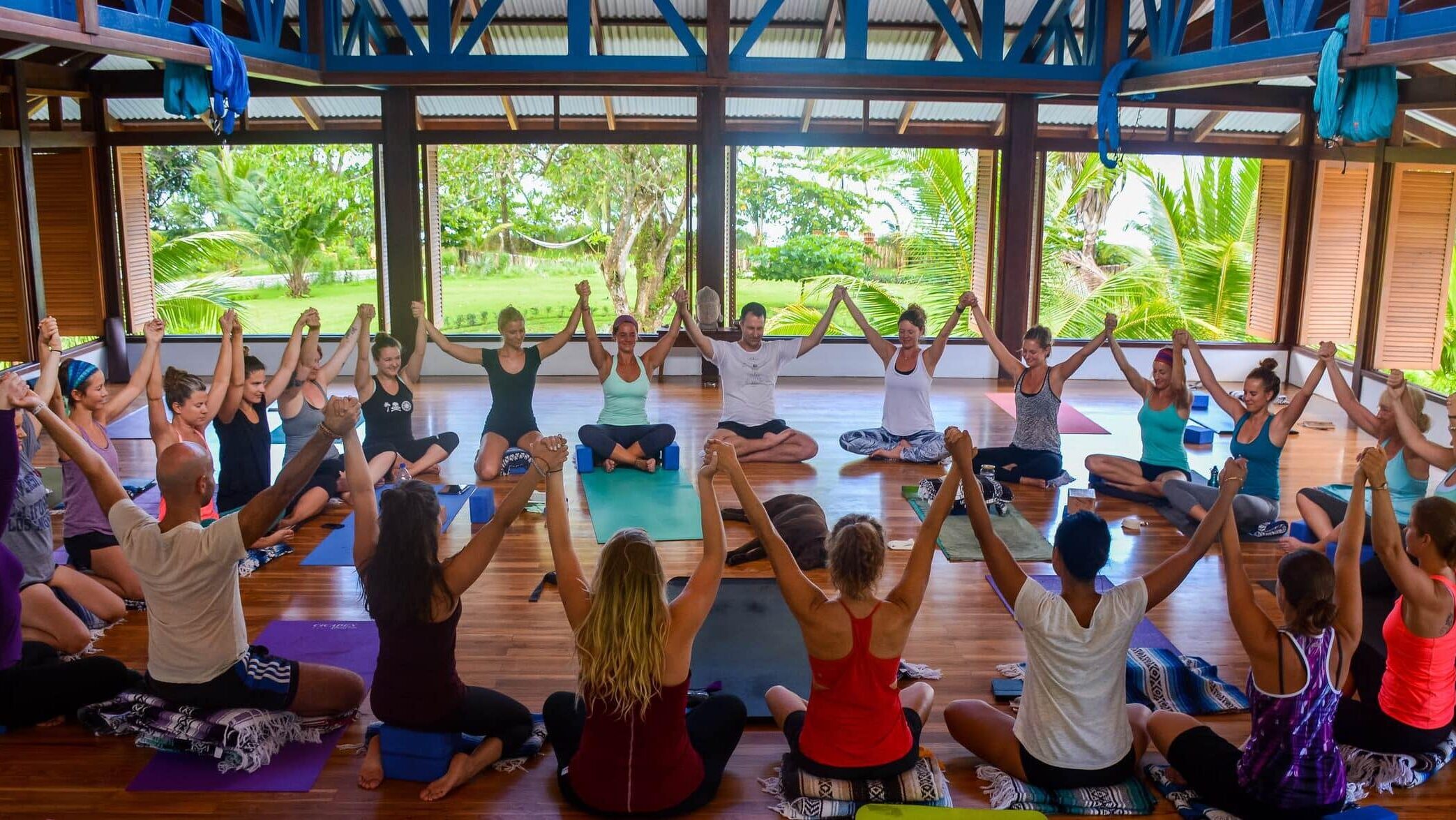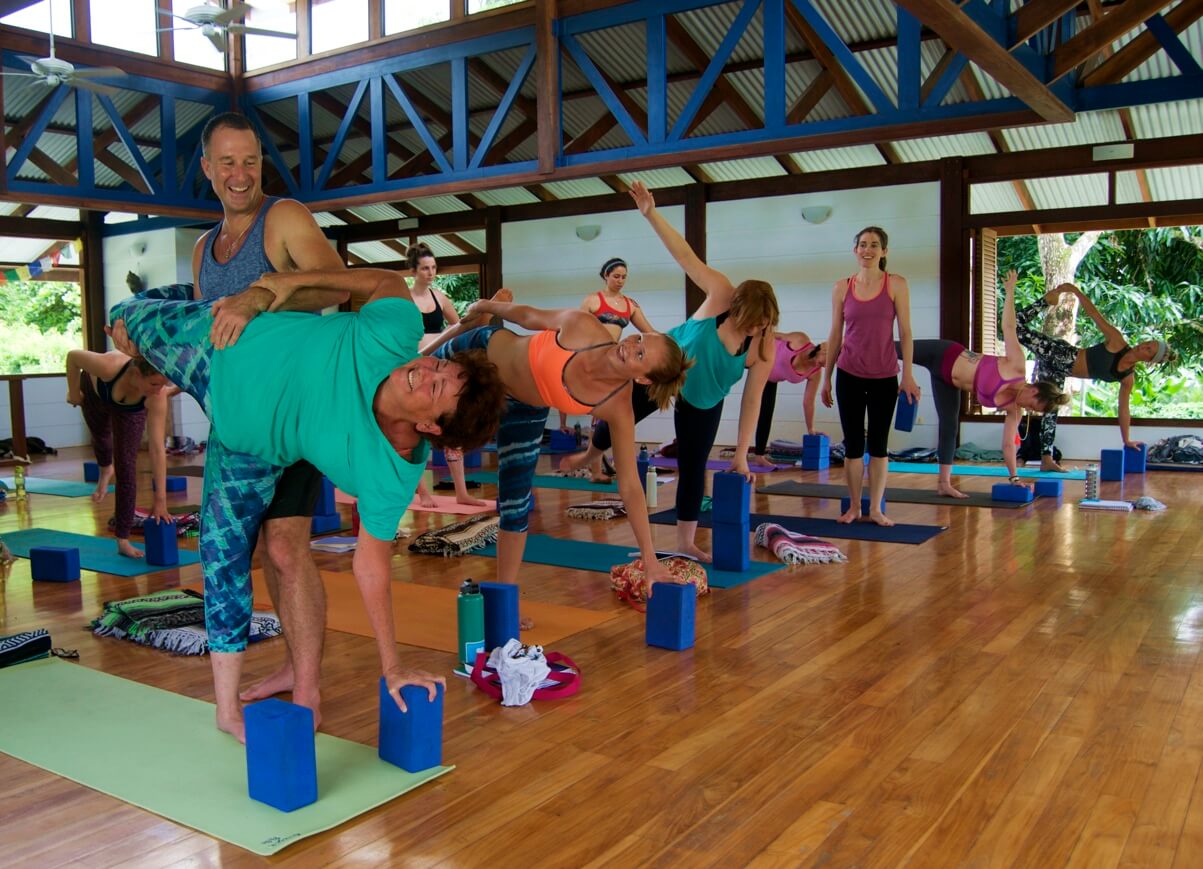Let me ask you a question:
Why are you stretching?
When I ask my students this question, they often say they stretch for flexibility, overall health, or sports performance. Maybe your answer is similar.
I then ask:
“How much flexibility do you need to be happy?”
No one has an answer. And the truth is, absolutely no science shows stretching leads to more happiness — or that the ability to do bendy yoga poses will give you a more fulfilling life.
In fact, there is no research to prove there are advantages to passive stretching.
Now, I know you landed here because you want to learn how to stretch correctly. Don’t worry; in this article, we’ll explore using dynamic stretching to improve muscle function and reduce pain.
But before we dive in, it’s crucial to examine why we’re stretching — and to take a hard look at what overstretching and flexibility could be doing to the body.
How To Stretch Properly For Flexibility (And The Biggest Mistake You Don’t Know You’re Making)
The perils of passive stretching
I’ve been teaching yoga for decades, and I was an avid stretcher for much of this time. After all, that’s what yogis do. Tight hamstrings? Try to reach your toes. Stiff muscles? Just “stretch it out.” Have pain? Work through it, because pain is just a state of mind.”
Sure, you’ll hear instructors say, “Yoga is not about flexibility.” But how many then turn around and lament over opening your stiff hips…
It wasn’t until I was dealing with a persistent shoulder injury that I began to ask:
Why are we so obsessed with stretching — and does stretching positively impact our health?
I was shocked by what I found. Not only does stretching have little to no effect on performance or injury prevention, but it can lead to increased pain and instability in the body.
Here’s why:
Stretching incapacitates muscle function. In other words, it makes your muscles weak — and where there is weakness, instability and injury are sure to follow.
As integrative wellness expert Steven Gangemi says:
“The thought that stretching relaxes and is therapeutic for tight muscles is not only a misconception, it has never been proven. It actually weakens muscles… Muscle tightness is due to an imbalance. The imbalance lies within the neuromuscular system.”
As a trained Muscle Activation Technique™ specialist, I ALWAYS find that muscle function disappears the moment we stretch.
Yes, always!
But it’s not just my personal experience that matters — the research supports the damage caused by passive stretching.
Take the Australian Ballet. They quit passive stretching altogether. Sue Meyes, head physiotherapist of the dancers, said:
“[Our approach is to] stop using the words’ stretching’ and ‘flexibility’ and to really try to think about it more as optimising your capacity, strength and power at those end ranges. We have found that by strengthening, you can increase your range of movement much more effectively and safely.”
The Australian Ballet
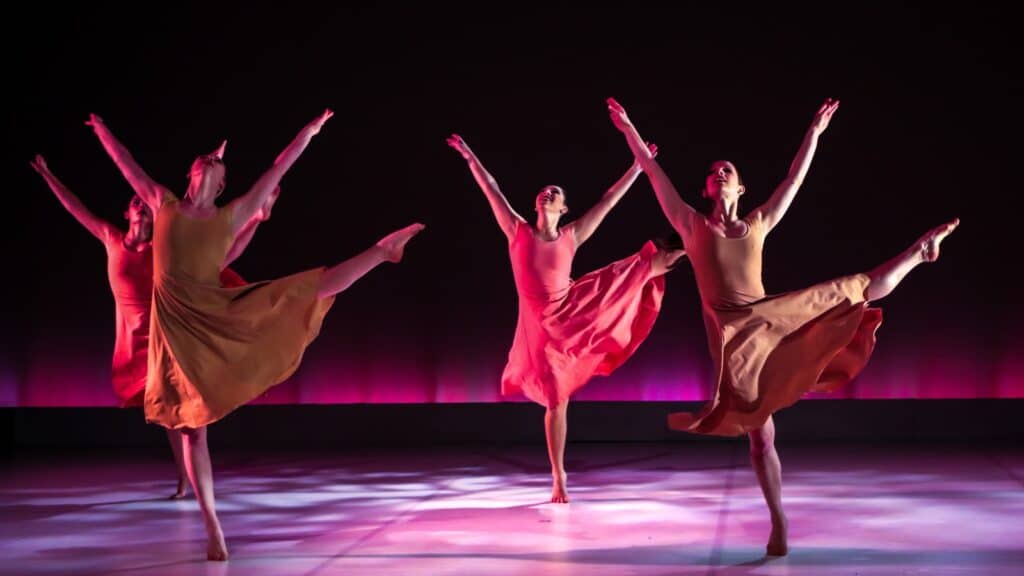
Then there’s this Cochrane review from 2012 that concluded:
“Muscle stretching, whether conducted before, after, or before and after exercise, does not produce clinically important reductions in delayed-onset muscle soreness in healthy adults.”
And this 2014 study discovered passive stretching decreased performance in a one-mile timed trial.
I could go on and on about why we need to stop the flexibility madness, but here’s my point:
Flexibility is overrated — and passive stretching is causing more harm than good.
So, if passive stretching isn’t the answer to how to stretch… then what is?
From an Applied Yoga Anatomy and Muscle Activation™ (AYAMA) perspective, we can stretch the body dynamically to engage muscles, improve contractility, and — ultimately — eliminate pain in the body. Let’s take a closer look at what that means.
Dynamic stretching vs passive stretching: What’s the difference?
I’ve mentioned passive and dynamic stretching a few times now. So, let’s take a sec to ensure we’re on the same page about these two approaches:
Passive stretching
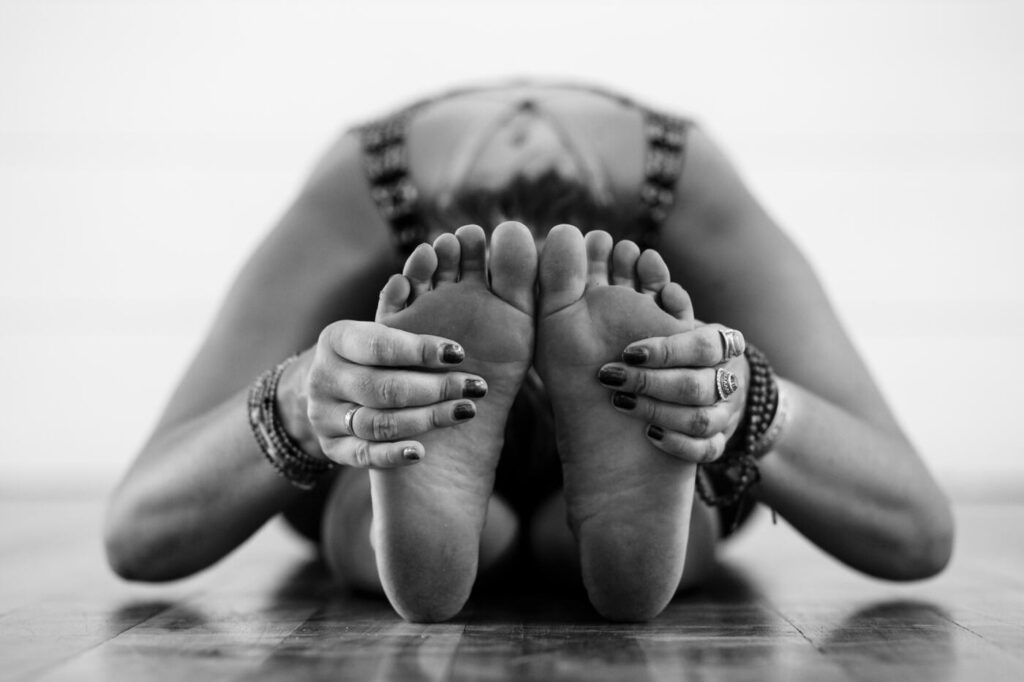
Most of us are well acquainted with passive stretching. We grew up learning to try to touch our toes or stretch out our hamstrings after a run.
With passive stretching, you use an external force to elongate your muscles and soft tissue past your organic range of motion. For example, you might grab onto your toes to pull yourself into a fold forward or hold your opposite arm and tug it across your body. You could also use props like a towel, band, gravity, or even a friend to move deeper into the stretch.
The problem is that with passive stretching, you pull on an entire system of connective tissue — leaving you vulnerable to overstretching and muscle instability. The muscle loses its ability to contract and, specifically, contract on demand.
Essentially, passive stretching makes you weaker.
Dynamic stretching
In dynamic stretching, there is no external force provided. You are actively moving one muscle group to stretch another. Dynamic stretching gently activates deep stabilizer muscles when practiced properly — it switches on key power muscle groups to ensure the entire body is working in balance.
Dynamic stretching prepares the nervous system for activity. Just by using the muscle, you’re bringing blood and nutrition to that part of the body. Plus, since dynamic stretching is self-limiting (there’s no external force), you don’t risk deforming muscle tissue.
Is there ever a place for passive stretching?
So, when it comes to how to stretch correctly, should you ever engage in passive stretching?
My answer might be controversial, but here it is:
No.
There are simply no proven benefits to passive stretching — but a whole lot of risk for muscle instability, injury, and pain.
The hamstring is a great example. If your hamstring is already over-lengthened, it will often feel stiff and painful. The tendency, then, is to stretch it out. This might make you feel better temporarily because you’re stimulating the nervous system. However, you’re just predisposing the muscle to tear.
Imagine a rubber band stretching. You can keep pulling on the elastic, but eventually, it’s going to snap…
Don’t wait until your body’s breaking point to change the way you stretch.
How to stretch properly
Here’s the truth:
We don’t want to stretch the muscles. (Remember the Australian Ballet story?) That’s because dynamic stretching isn’t really about stretching at all (at least in the traditional sense of the word.)
Instead, we want to move the body dynamically to properly engage the muscles for a strong, stable body. We enhance the muscles’ ability to contract on demand when we improve muscle function.
For example, in Supta Padangusthasana (Reclining Hand to Big Toe Pose), we could use a strap to grab onto the leg or foot, forcing the hamstring to elongate. This would be a passive stretch; it would bypass the role of the rectus femurs and ultimately lead to instability. In other words, the quads and other hip flexor muscles would STOP WORKING. (Keep in mind that functioning hip flexors play an essential role in lower back stability.)
Or, we could engage in a dynamic stretch, bringing one leg up and holding it at the end of our natural range of motion. We employ the hip flexors to support the action, strengthening and awakening the rectus femurs. This promotes a strong and stable body.
Now…
Want to see the power of muscle activation, as I described above, in action?
Watch the video below. You’ll see an important muscle — the glute — has lost its ability to contract on demand. This can lead to lower back pain and a slew of other problems.
Rather than passively stretch the glutes, watch how we use dynamic stretching and AYAMA to
Immediately activate the glutes and improve muscle function.
The real-time results are mind-blowing…
How to stretch with proper stretching techniques:
Here are a few tips for the best way to stretch safely and effectively:
- Make your goal strength, stability, and alignment — not range of motion or flexibility.
- Don’t stretch or pull the muscles past where they can move on their own
- Learn about AYAMA. These yoga classes specifically address how to improve muscle function so you can increase mobility — and decrease pain and tension.
You deserve to live a pain-free life
Over the past few years, I’ve come across hundreds of yoga students who are struggling with pain…
…attempting to “stretch out” their injuries after months and even years of ongoing pain and weakness.
Unfortunately, if these people keep obsessing over how to stretch, more injury is sure to follow.
There’s a better, faster solution to relieving pain — one I’ve seen work time and time again with hundreds of my students: Applied Yoga Anatomy and Muscle Activation™.
This revolutionary yoga practice focuses on activating and engaging the muscles — not stretching them out.
I’ve used this proven system to help people who have struggled with chronic pain for years — and they are shocked when they leave a 90-minute session feeling stronger, more mobile, and, most importantly, pain-free.
And now it’s available to you for FREE with my 15-day challenge: Dare To Live Pain-Free.
In just 15 days, I’ll teach you how to become pain-free for good…
…following my proven Applied Yoga Anatomy and Muscle Activation™ method.
Join the free 15-day challenge today.
The bottom line and how to stretch?
I know it’s not easy to stop passive stretching cold turkey. I’ve been there, too. As a master yoga teacher, I’d devoted my life to the practice of yoga — having to change my perspective on traditional stretching pushed me far outside my comfort zone.
However, once I started seeing the damage over-stretching caused — and experiencing the life-changing strength and stability AYAMA brought to my body…
…well, there was no going back. 😉
It’s why I’m on a mission to help others live a pain-free life — and why I hope you’ll join me, too.
Ready to swap hyper-flexibility for strength, mobility, and stability? Learn more about Applied Yoga Anatomy and Muscle Activation here.
About Yogi Aaron
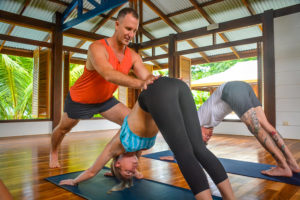
Yogi Aaron is the owner, operator, and lead yoga facilitator at Blue Osa and of the yoga teacher trainings.
Creator of Applied Yoga Anatomy + Muscle Activation™ Yogi Aaron brings three decades’ worth of study, mentorship, and experience into his teachings, with a strong emphasis on yoga therapy and alignment.
The Muscle Activation Yoga Classes is an exploration into your body, its muscles, and to learn how to improve its function through using Applied Yoga Anatomy + Muscle Activation™.
Find out more about yoga teacher trainings with Yogi Aaron at Blue Osa Yoga Retreat + Spa.
Read More about Applied Yoga Anatomy + Muscle Activation
Book/Inquire Now
Got pain? This will help you!
YOU DESERVE TO LIVE PAIN-FREE...
Receive 7 short, simple, and effective practices to alleviate knee, hip, low back, neck, shoulder pain, and more!
All you need is 5 minutes per lesson and it's FREE!
This revolutionary approach to yoga is new, and no one else is teaching this! Since I created Applied Yoga Anatomy + Muscle Activation™ and started teaching it consistently, I've witnessed students heal long-standing injuries, access yoga postures they never thought possible, and tell me over and over again how their body just feels better.
I hope you'll join me on this journey!
~Yogi Aaron
Is Yoga Teacher Training Right For Me?
We Created This FREE 5 Part Series So You Can Get All The Information To Make The Right Choice.
In this series, you will learn:
-
- Am I a candidate for yoga teacher training??
-
- What will I learn in a YTT?
-
- Do I need to have a perfect downward dog to attend YTT?
14-Day 200-Hour Yoga Teacher Training in Costa Rica
If you are looking for a 14-day 200 hour Yoga Teacher Training Costa Rica Immersion, you have landed in the right place. Join the next one!
300-Hour, 28-Day Yoga Teacher Training
Do You Feel Called To Something Greater?
This 300-Hour Yoga Teacher Training immersion training at Blue Osa will immerse you in yoga for one month.
You will have the specific transformational skills and yogic practices you need in order to connect with your higher purpose.
And more! You will be able to offer these transformative skills to others!

